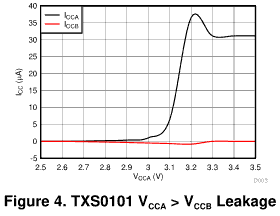Other Parts Discussed in Thread: TXS0102
Dear Sir or Madam,
TCA9406 datasheet states VCCA must be less than or equal to VCCB. What are the tolerances when VCCA equals VCCB? Especially when both are powered from different 3.3V (nominal) power supplies.
Thank you for you reply in advance
Regards,


